Easy Use function
The Easy Use function helps users set up the CMMB motor controller for
the main types of applications in a very short time. The LED panel guides
the user step by step through the settings of the few most important
parameters in order to prepare the controller for the desired application.
The servo control loops of the motor controller are pre-congured to use-
ful default settings which are adequate for many applications at as they
are. A robust auto-tuning function can be used additionally to identify the
applied mechanical system more precisely. After that, the user only needs
to adjust the controller’s servo performance with the stiffness parameter.
Setup process with Easy Use function
The process for setting up the CMMB motor controller with the Easy Use
function follows a simple procedure.
Step 1: The parameters of the EASY panel menu have to be accessed and
conrmed, or set one by one. The auto-recognized motor type can be
conrmed, the control interface has to be selected, interface-related main
parameters have to be set and the mechanical and control application
types must be chosen. Afterwards, these parameter have to be stored
and the controller has to be rebooted. As a result of these settings, the
controller is congured for a suitable I/O setting and the servo control
loop parameters are set to matching defaults. The controller is ready for
use for a wide range of standard applications and can be tested.
Step 2: If the servo control performance of the controller has to be further
improved, the tunE panel menu must be accessed. With the help of the
functions in this menu, the controller can start an auto-tuning motor run
in order to identify motor load conditions and measure load inertia. The
controller detects the ratio of the load inertia relative to motor inertia and
tunes the servo loops according to one single parameter, namely stiff-
ness. Stiffness can be easily adjusted up or down in the tunE menu with
the panel buttons. during the application can be test-run via the selected
command interface. After nding the best value for stiffness, the tunE
parameters need to be stored and the controller is nally ready for use.
If adjustment of stiffness does not result in the required performance, the
PC software “CMMB congurator” can be used to for further optimisation.
Safety and requirements for product use
Warning
Danger of electric shock
• If cables are not mounted to the plug (X2).
• If connecting cables are disconnected when energised.
Touching live parts causes severe injuries and can lead to death.
The product may only be operated in the installed state and when all
safeguards have been initiated.
Before touching live parts during maintenance, repair and cleaning work
and after been long service interruptions:
1. Switch off power to the electrical equipment via the mains switch and
secure it against being switched on again.
2. After switching-off, allow to discharge for at least 5 minutes and check
that power is turned off before accessing the controller. Make sure that
the charge lamp on the front of the controller is off.
Warning
Danger of electric shock
Motor controllers are devices with increased leakage current (> 3.5 mA). If
wiring is incorrect or the device is defective, high voltage can occur on the
housing, which can result in serious injury or even death if the housing is
touched.
• Before commissioning, also for brief measuring and test purposes, con-
nect the PE protective conductor.
• Observe the regulations of EN 60204-1 for the protective earthing.
1
2
1 Pin 1 2 Pin 19
X4 – Multi-function connector
Pin 1 OUT1+ Pin 19 AIN1+
Pin 2 COMI Pin 20 OUT5
Pin 3 OUT1- Pin 21 AIN1-
Pin 4 DIN1 Pin 22 +5V
Pin 5 OUT2+ Pin 23 AIN2+
Pin 6 DIN2 Pin 24 GND
Pin 7 OUT2- Pin 25 AIN2-
Pin 8 DIN3 Pin 26 ENCO_Z
Pin 9 OUT3 Pin 27 MA+
Pin 10 DIN4 Pin 28 ENCO_/Z
Pin 11 OUT4 Pin 29 MA-
Pin 12 DIN5 Pin 30 ENCO_B
Pin 13 COMO Pin 31 MB+
Pin 14 DIN6 Pin 32 ENCO_/B
Pin 15 VDD Pin 33 MB-
Pin 16 DIN7 Pin 34 ENCO_A
Pin 17 VEE Pin 35 MZ+
Pin 18 MZ- Pin 36 ENCO_/A
1
X2 – Power connector
Pin 1 L1C Control power input L/N
Pin 2 L2C
Pin 3 L1 Drive power input L/N
Pin 4 L2
Pin 5 DC+
/RB1
DC+ DC bus+
RB1 External braking resistor input
Pin 6 RB2 Internal braking resistor input
Pin 7 RB- External braking resistor input
Pin 8 DC- DC bus-
Pin 9 U U/V/W phase power output for
servo motor
Pin 10 V
Pin 11 W
Short-circuit DC+ / RB1 and RB2 if choosing controller
internal braking resistor (power: 10 W).
Wire cross section for all pins:
AWG 22 (0.32 mm²) to AWG 14 (2.1 mm²)
1
Pin 1
Warning
It is forbidden to use the internal braking resistor if average brake power
is greater than 10 W.
Model Fuse 1 Fuse 2
CMMB-AS-01 1 A 3.5 A
CMMB-AS-02 1 A 3.5 A
CMMB-AS-04 1 A 7 A
CMMB-AS-07 1 A 15 A
4 5 5 6
2 3
3 4
1 2
The following gure shows the wiring of X4 with default IO function. More
IO functions can be dened with the digital panel or PC software.
Electrical installation
2
Parameter description
5
Default I/O function
4
Pin connection
3
General information / Preparation
1
Note
For all available product documentation www.festo.com/pk
Warning
Danger of electric shock
This product can cause a DC current in the protective ground conductor.
In cases where an error current protection unit (RCD) or an error current
monitoring device (RCM) is used to protect against direct or indirect con-
tact, only the Type B kind of RCD or RCM is permitted on the power supply
side of this product.
Intended use
The CMMB is intended for:
• Use in control cabinets for power supply to AC servo motors and their
regulation of torques (current), rotational speed and position.
The CMMB is intended for installation in machines or automated systems
and may only be used:
• When in excellent technical condition
• In original status without unauthorised modications
• Within the limits of the product dened by the technical data
• In an industrial environment
The product is intended for use in industrial areas. When used outside an
industrial environment, e.g. in commercial and mixed residential areas,
measures for radio interference suppression may be necessary.
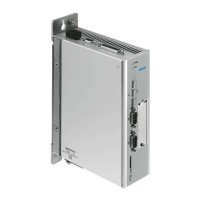
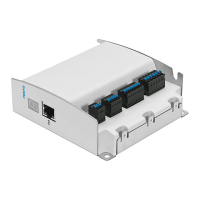
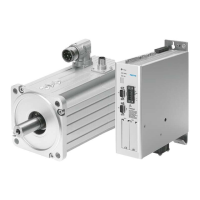


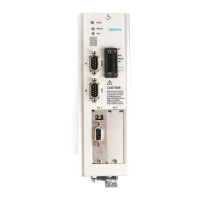
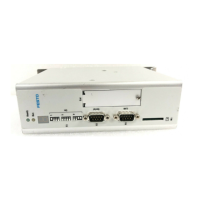
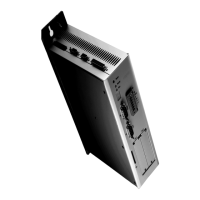




